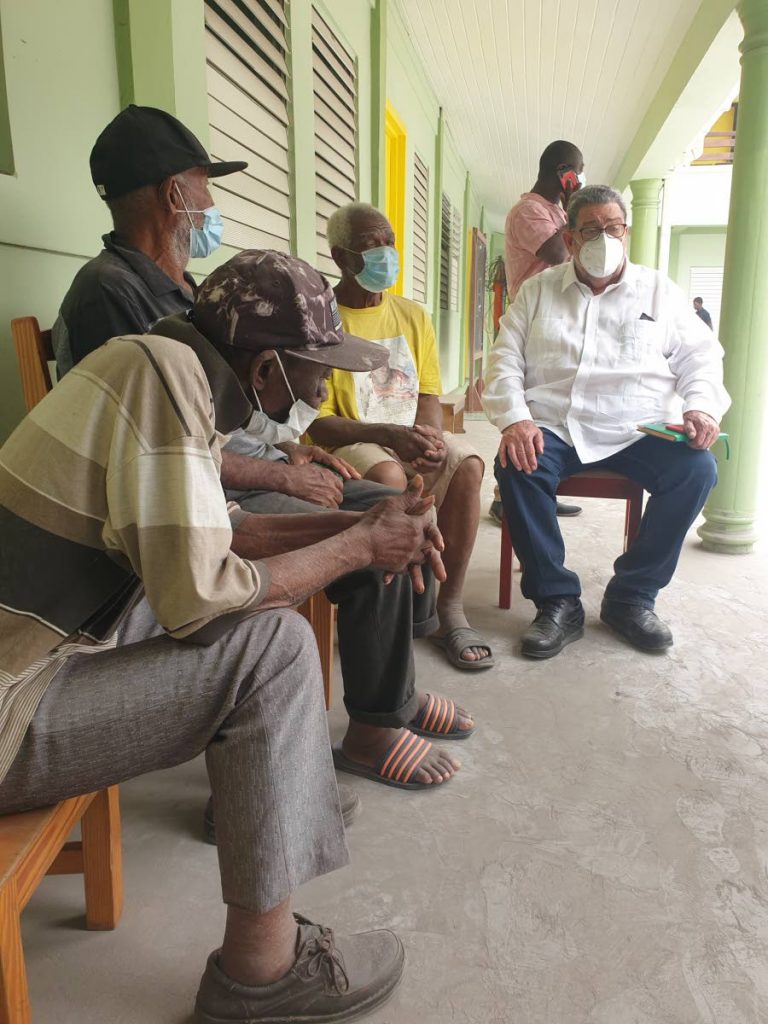Some residents still not leaving La Soufriere's 'red zone'

PYROCLASTIC flows, described by volcanologist Dr Richard Robertson as "moving masses of destruction," contained in volcanic ash, are just one of the threats facing people who ignored the mandatory evacuation order.
It will not only pose a danger to them but also rescue teams who have braved the elements to remove them.
St Vincent and the Grenadines Prime Minister Ralph Gonsalves on Sunday said no fatalities attributed to the eruptions have been recorded.
However, Robertson, Director of UWI's Seismic Research Centre, warned that pyroclastic flows "are not like the ash that damage things by the weight."
"These flows really are moving masses of destruction. They just destroy everything in their path. If you have the strongest house in the world, they will just bulldoze it off the ground," he said.
The SRC gave an update on Sunday morning, saying that in the previous 12 hours, episodes of tremors, normally lasting up to 20 minutes with intervals of 1.5 to three hours, have continued to be recorded.
"Based on visual observations and satellite imagery," it said, "the intervals are associated with periods of explosive activity or enhanced venting.
"Thunder and lightning were experienced during these periods (and) heavy ash fall was observed at the Belmont Observatory throughout the night.
It said ash fall was also reported in most areas St Vincent overnight and in neighbouring islands in the Grenadines, as well as Barbados and St Lucia.
It concluded, "Explosions and accompanying ashfall, of similar or larger magnitude, are likely to continue to occur over the next few days."
Robertson gave insight into the dangers associated with volcanic ash.
It reportedly caused several houses in St Vincent to collapse under its weight.
Robertson said, "It means that the amount of devastation you’re probably going to have, unfortunately, on the volcano itself, when this thing is stopped...it’s going to be significant. Not only because of the ash but because of these flows," he said.
"In front of it there’s a wave of finer ash called a surge–if you think of a hot, heavy wind.
"So, you have a heavy part that’s in the main part and then you have a wind that’s stretching out to the front and to the side. And above it you have a rising column of ash just like in the plumes.
"They would boil the sea and they would shoot across the sea as a foam of rapidly moving hot air and they will scald anything in their way," Robertson said.
Offering a visual he said, "We don’t have lava flows, the nice slow runny things that’s red and glowing–we don’t have those things here.
"What we have is fragments of rock and boulders and other things that shoot down the mountain very fast and destroys everything."
In spite of these dangers, editor at St Vincent and the Grenadines's Searchlight Newspaper Clare Keizer told Newsday residents in the red zone who refused to leave, cited a number of reasons for doing so. People most often chose to remain home to protect their homes from vandalism and larceny.
"It's very sad. This morning the Coast Guard had to go up to the north east coast to rescue some people who stayed back but had a change of heart because vehicles cannot go any further north past a certain point. There is so much ash in the road and boulders and stones and so on, you can't rescue them by land."
On the east coast, she said, there is only one proper jetty.
"There are others who are still refusing to leave."
However, the visibility close to the volcano has improved since Saturday. "Yesterday (Saturday) was horrible. We could hardly see a few feet in front of us."
For some, Monday will almost be business as usual. The Cabinet secretary announced that public workers to return to work unless they were among those displaced or facing exceptional circumstances.
She described the water and electricity situation as "intermittent" with both being affected by the volcanic ash.


Comments
"Some residents still not leaving La Soufriere’s ‘red zone’"